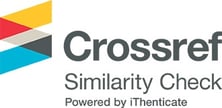Pengaruh Elemen Fraud Hexagon Terhadap Kecurangan Laporan Keuangan
DOI:
10.33395/owner.v8i4.2482Keywords:
Financial Statement Fraud, Stimulus, Opportunity, Rationalization, Capability, Ego, CollusionAbstract
This research aims to determine the influence of External Pressure, Ineffective Monitoring, Total Accrual Ratio, Change Of Directors, Frequent Number Of CEO'S Picture, and Pokitical Connection Fraud hexagon elements on the condition of financial statements. This study uses a population of Kompas 100 companies listed on the Indonesia Stock Exchange in the period 2018 - 2022 The number of samples used was 43 companies from the purposive sampling method using 2 sample criteria. The data analysis method used in this study is a panel data regression model processed using eviews 12. The results of this study indicate that out of all independent variables, there are 2 variables that influence financial statement fraud, namely the Stimulus variable with the proxy of External Pressure with a probability value of 0.0000 and the Opportunity variable with the proxy of Ineffective Supervision with a probability value of 0.0044. Meanwhile, there are 4 variables that do not influence financial statement fraud, namely the Rationalization variable with the proxy of Total Accrual Ratio with a probability value of 0.5914, the Ability variable with the proxy of Changes in the Board of Directors with a probability value of 0.4331, the Ego variable with the proxy of the Number of CEO Photos that appear with a probability value of 0.5482, and the Collusion variable with the proxy of Political Connections with a probability value of 0.9762. The results of this study are expected to be new knowledge that can be used to determine what factors trigger financial statement fraud and can be used to anticipate financial statement fraud. The components of the fraud hexagon theory applied to Kompas100 can influence only two aspects; the other four elements cannot represent the ability to detect fraud. This can be identified because the top 100 companies are those that are relatively free from fraud.
Downloads
Plum-X Analityc
References
Abbas, M. T., & Laksito, H. (2022). Analisis Determinan Kecurangan Laporan Keuangan Menggunakan Perspektif Fraud Diamond Theory (Studi Kasus pada Perusahaan Manufaktur yang Terdaftar di BEI Tahun 2018-2020). Diponegoro Journal of Accounting, 11(4), 1–15. http://ejournal-s1.undip.ac.id/index.php/accounting
Cahyo, M. K., & Napisah, N. (2023). Pengaruh Intensitas Modal, Pertumbuhan Penjualan, Ukuran Perusahaan Dan Corporate Governance Terhadap Penghindaran Pajak. Jurnal Revenue?: Jurnal Akuntansi, 4(1), 14–32.
Daljono, B. G. D. (2023). Analisis Pengaruh Fraud Hexagon Terhadap Fraudulent Financial Reporting Menggunakan Metode Beneish M-Score. Diponegoro Journal of Accounting, 12(3), 1–15. http://ejournal-s1.undip.ac.id/index.php/accounting
Dewi, C. K., & Anik Yuliati. (2022). Pengaruh Fraud Hexagon Terhadap Kecurangan Laporan Keuangan (Studi Empiris Pada Perusahaan Makanan dan Minuman Yang Terdaftar di BEI). Jurnal Riset Terapan Akuntansi, 6(2), 115–128. https://jurnal.polsri.ac.id/index.php/jrtap/article/view/4645
Hadi, M. S. W., Kirana, D. J., & Wijayanti, A. (2021). Pendeteksian Fraudulent Financial Reporting Dengan Fraud Hexagon Pada Perusahaan Di Indonesia. PROSIDING BIEMA Business Management, Economic, and Accounting National Seminar, 2, 1036–1052.
Handoko, B. L. (2021). Fraud Hexagon dalam Mendeteksi Financial Statement Fraud Perusahaan Perbankan di Indonesia. Jurnal Kajian Akuntansi, 5(2), 176. https://doi.org/10.33603/jka.v5i2.5101
Istanto, C. H. P. (2022). Analisis Pengaruh Hexagon Fraud Terhadap Kecurangan Laporan Keuangan. Skripsi, 1–132.
Khuluqi, K., & Napisah. (2022). Pengaruh Fraud Pentagon Terhadap Kecurangan Laporan Keuangan Dengan Ukuran Perusahaan Sebagai Pemoderasi. WACANA EKONOMI (Jurnal Ekonomi, Bisnis Dan Akuntansi), 21(2), 198–211. https://doi.org/10.22225/we.21.2.2022.198-211
Kusumawardhany, S. S., & Shanti, Y. K. (2022). Analisis Faktor-Faktor Yang Mempengaruhi Fraudulent Financial Statement Dengan Perspektif Fraud Diamond. Jurnal Akuntansi Dan Pajak, 23(01), 1–13.
Larum, K., Zuhroh, D., & Subiyantoro, E. (2021). Fraudlent Financial Reporting: Menguji Potensi Kecurangan Pelaporan Keuangan dengan Menggunakan Teori Fraud Hexagon. AFRE (Accounting and Financial Review), 4(1), 82–94. https://doi.org/10.26905/afr.v4i1.5818
Manafe;, M. D. S. A. L., Ambar, L. W. F. I., Nyoman, K. D. R. N., Eko, A. T. T. D. W., Dewi, W. P. U. R. T., Linda;, A. R. N. N. A., & Fatah, H. A. K. (2020). Audit Kecurangan Dan Forensik. In Hidayatullah (Ed.), Buku (1st ed., Vol. 7, Issue 2). EUREKA MEDIA AKSARA.
Mukaromah, I., & Budiwitjaksono, G. S. (2021). Fraud Hexagon Theory dalam Mendeteksi Kecurangan Laporan Keuangan pada Perbankan yang Terdaftar di Bursa Efek Indonesia Tahun 2015-2019. Jurnal Ilmiah Komputerisasi Akuntansi, 14(1), 61–72. http://journal.stekom.ac.id/index.php/kompak?page61
Mulia, C., & Tanusdjaja, H. (2021). Analisis Fraud Diamond Untuk Mendeteksi Terjadinya Financial Statement Fraud Di Perusahaan Real Estate. Jurnal Kontemporer Akuntansi, 1(1), 10. https://doi.org/10.24912/jka.v1i1.15067
Nadziliyah, H., & Primasari, N. S. (2022). Analisis Fraud Hexagon Terhadap Financial Statement Fraud Pada Perusahaan Sektor Infrastruktur, Utilitas Dan Transportasi. Accounting and Finance Studies, 2(1), 21–39. https://doi.org/10.47153/afs21.2702022
Octaviana, N. (2022). Analisis Elemen-Elemen Fraud Hexagon Theory Sebagai Determinan Fraudulent Financial Reporting. Jurnal Akuntansi, 11(2), 106–121. https://doi.org/10.46806/ja.v11i2.895
Oktaviani, N., & Dhia Wenny, C. (2023). 2 ND MDP STUDENT CONFERENCE (MSC) 2023 36| Universitas Multi Data Palembang FRAUD PENTAGON DALAM MENDETEKSI FINANCIAL STATEMENT FRAUD. 36–45.
Permatasari, D., & Laila, U. (2021). Deteksi Kecurangan Laporan Keuangan Dengan Analisis Fraud Diamond Di Perusahaan Manufaktur. Akuntabilitas, 15(2), 241–262. https://doi.org/10.29259/ja.v15i2.13025
Putra, A. R., & Kusnoegroho, Y. A. (2021). Pengujian Fraud Pentagon dalam Mendeteksi Kecurangan Laporan Keuangan. AFRE (Accounting and Financial Review), 4(2), 172–185. https://doi.org/10.26905/afr.v4i2.6269
Putra, N. N. A. N., & Herkulanus Bambang Suprasto. (2022). Penggunaan Fraud Pentagon dalam Mendeteksi Kecurangan Laporan Keuangan Perusahaan Perbankan di Indonesia. E-Jurnal Akuntansi, 32(1), 3481. https://doi.org/10.24843/eja.2022.v32.i01.p12
Rahman, A. (2023). Economics and Digital Business Review. Economics and Digital Business Review, 4(1), 483–500.
Rahmawati, A. T., & Utami, E. S. (2023). Analisis Pengaruh Fraud Hexagon dalam Mendeteksi Potensi Kecurangan Laporan Keuangan. Jurnal Riset Akuntansi Dan Bisnis, 23(2), 73–81.
Sagala, S. G., & Siagian, V. (2021). Pengaruh Fraud Hexagon Model Terhadap Fraudulent Laporan Keuangan pada Perusahaan Sub Sektor Makanan dan Minuman yang Terdaftar di BEI Tahun 2016-2019. Jurnal Akuntansi, 13(2), 245–259. https://doi.org/10.28932/jam.v13i2.3956
Setyono, D., Eko Hariyanto, Sri Wahyuni, & Bima Cinintya Pratama. (2023). Penggunaan Fraud Hexagon dalam Mendeteksi Kecurangan Laporan Keuangan. Owner, 7(2), 1036–1048. https://doi.org/10.33395/owner.v7i2.1325
Suryandari, N. N. A., & I Dewa Made Endiana. (2004). Fraudulent Financial Statements. In Anik Yuesti (Ed.), CFA Institute Magazine (1st ed., Vol. 15, Issue 3). CV Noah Aletheia. https://doi.org/10.2469/cfm.v15.n3.2873
Ulhaq, D., & Trisnawati, R. (2023). Pengaruh Fraud Hexagon Model Statements Fraud Terhadap Financial Daffa. Economics and Digital Business Review, 4(1), 483–500.
Wahyuni Sappali, W., Kuntadi, C., Luki Karunia, R., STIA LAN Jakarta, P., & Author Winda Wahyuni Sappali, C. (2023). Jurnal Manajemen, Akuntansi, dan Logistik (JUMATI). 1, 300–313.
Downloads
Published
How to Cite
Issue
Section
License
Copyright (c) 2024 Napisah, Farida Maharani

This work is licensed under a Creative Commons Attribution-NonCommercial 4.0 International License.
















